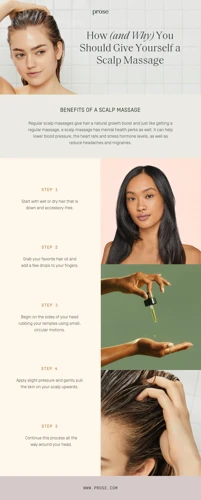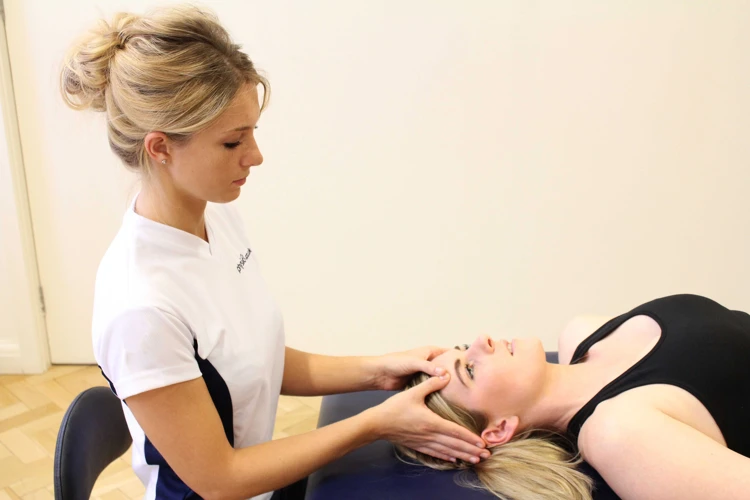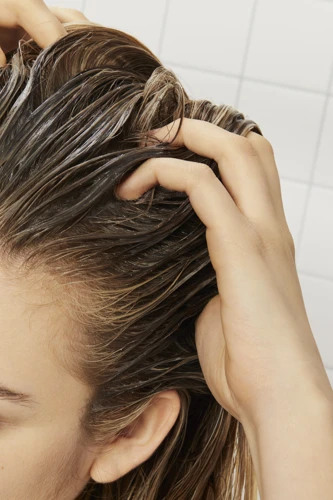If you’re looking for an easy and relaxing way to give someone special in your life a special treat, learning how to give a head massage is the perfect solution. With just a few simple steps, you can give your loved one the perfect relaxation experience. From the proper massage techniques to the soothing oils that can help create the perfect atmosphere, this guide will help you provide the perfect head massage for your recipient.
Contents
Benefits of Head Massage

- Stress Relief: Head massage can reduce stress and tension, and can improve mood and energy levels.
- Mental Clarity: Head massage can help to improve focus and concentration, and can reduce the occurrence of headaches.
- Headache Relief: Head massage can help to reduce the symptoms of migraines and tension headaches.
- Relaxation: Head massage can lead to a deep relaxation of the body and mind, and can help to improve sleep quality.
- Improved Circulation: Head massage can stimulate circulation and promote the flow of oxygen to the brain.
- Pain Relief: Head massage can help to reduce pain in the neck and shoulders, and can help to alleviate muscle tension.
Head massage is a great way to relax and de-stress. With the right technique, you can reap the numerous benefits of a good head massage, including stress relief, mental clarity, headache relief, relaxation, improved circulation, and pain relief. Learning how to give a brain massage is an important part of any relaxation experience.
Preparation for Head Massage

Choose a Quiet Place
Finding the right spot for a head massage is key. Look for a place that’s quiet and free from distractions. This can be a bedroom, living room, or a quiet corner of the house. Make sure the area is well ventilated and comfortable.
Gather the Necessary Tools
Head massage can be done with just your hands, but having the right tools can make it even more relaxing. Gather some essential oils, a massage oil, and a massage brush or comb. If you want, you can also use a massage pillow or headband for added comfort.
Head Massage Techniques

Basic Technique
Begin with a gentle stroking of the scalp, moving from the crown to the forehead, then from the nape of the neck to the temples. This motion should be done with your fingertips as you move in circles.
Forehead Massage
Using your fingertips, gently massage the forehead in a circular motion. Move from the bridge of the nose to the hairline, and then from the temples to the center of the forehead. This can help to relieve tension and headaches.
Brain Massage
Using the tips of your fingers, massage the scalp in small circles. This stimulates the nerve endings and helps to relax the mind.
Neck Massage
Gently massage the neck, moving from the base of the skull to the shoulders. Use your fingertips to press lightly on the pressure points in the neck. This helps to relieve stress and tension in the neck muscles.
When you have finished the massage, finish with a few gentle strokes to the scalp. This helps to bring the body into balance, so you can enjoy the full benefits of a relaxing head massage.
Tips for Doing Head Massage at Home

Create a Relaxing Environment
Creating a tranquil atmosphere is an important part of giving a head massage. Dim the lights, light some candles, and play soothing music. Make sure the room is warm, but not too hot. This will ensure the person receiving the massage is comfortable and relaxed.
Use Essential Oils
Essential oils can add a wonderful scent and help to relax the recipient. Add a few drops to your hands before you begin the massage and rub your hands together to warm them up. You can also use a scented massage oil if you prefer.
Use the Right Amount of Pressure
Using the right amount of pressure is key to giving a good head massage. Start with light pressure and gradually increase it, paying attention to the recipient’s body language. Too much pressure can cause discomfort and can be counterproductive.
Using these tips, you can give the perfect head massage for relaxation.
Safety Considerations
Be aware of any potential contraindications before beginning a head massage. As with any massage, certain medical conditions or medications contraindicate massage. These include conditions such as cancer, pregnancy, diabetes, severe headaches, high blood pressure, and any skin diseases. If you are unsure about any contraindications, consult a medical professional before proceeding.
Don’t massage over open wounds or sores, and be aware of any areas of skin that are excessively sensitive. If you come across any sensitive areas, proceed cautiously, and don’t use pressure that is too deep.
Be aware of any signs of discomfort during the massage. If the recipient experiences any pain, stop the massage immediately.
Keep your fingernails short, so you don’t scratch or damage the skin while performing the massage.
Wash your hands with soap and warm water before beginning the massage.
Use oil to reduce friction and protect the skin. Be aware of any allergies the recipient may have to any particular oils, and use oil that is specifically formulated for massage.
By following the simple steps outlined above, you can give a relaxing and safe head massage.
Frequently Asked Questions
What Types of Oils Can I Use for Head Massage?
Head massages are best experienced with the help of natural oils. A variety of oils work well, including coconut, almond, sesame, and jojoba oil. You can also use essential oils, such as lavender or chamomile, for a calming effect. Make sure to dilute essential oils with a carrier oil before applying to the skin.
How often should I give head massages?
It depends on the individual. Generally, for a relaxed and enjoyable experience, it is recommended to give yourself or your partner a head massage at least once a week. In between, you can give head massages as needed or desired, depending on the situation.
- For Stress Relief: If you or your partner are feeling particularly stressed, a head massage can help relieve tension and provide relaxation. You can give a head massage as often as necessary in this case.
- For Relaxation: A head massage can be a great way to unwind and relax. You can give yourself or your partner a head massage once a week or more often, depending on your preference.
- For Health Benefits: Regular head massages can have a variety of health benefits. These include improved circulation, reduced stress, and improved sleep. To reap these benefits, it is recommended to give yourself or your partner a head massage at least once a week.
How do I know if I’m applying the correct pressure?
- Communicate: Ask your partner how the pressure feels. If they say it’s too soft, gradually increase the pressure while paying attention to their response. If they say it’s too hard, decrease the pressure.
- Observe: Pay attention to your partner’s body language. If they are visibly tensing up, the pressure is too hard. If the massage is too soft, your partner might appear relaxed.
- Respond: Respond to your partner’s verbal and non-verbal cues. If they are tense, reduce the pressure but continue to massage the area. If they appear relaxed, maintain the pressure.
What other relaxation techniques can I incorporate into a head massage?
In addition to the massage itself, you can use other relaxation techniques such as aromatherapy, music, and visualization to further enhance the experience. Aromatherapy involves using essential oils to promote relaxation. Choose a calming scent to help your client relax, like lavender or chamomile. Music can also be used to create a relaxing atmosphere. Choose a soothing soundtrack to play during the massage. Visualization involves imagining a peaceful scene or place, and can be incorporated during a head massage by asking your client to close their eyes and picture the scene in their mind.
Is it necessary to use special massage tools for a head massage?
No, it is not necessary to use special massage tools for a head massage. You can use your fingers and palms to massage the head, neck, and shoulders. However, massage tools such as scalp massagers, massage balls, and massage brushes can help to increase blood circulation in the head and offer a more relaxing experience.
Conclusion
Head massages are an incredibly relaxing and therapeutic experience that can be shared with a partner or enjoyed alone. With the right techniques and the right products, anyone can learn how to give a head massage that will leave their partner feeling relaxed and rejuvenated. So take some time to practice, and enjoy the benefits of giving the perfect head massage.

